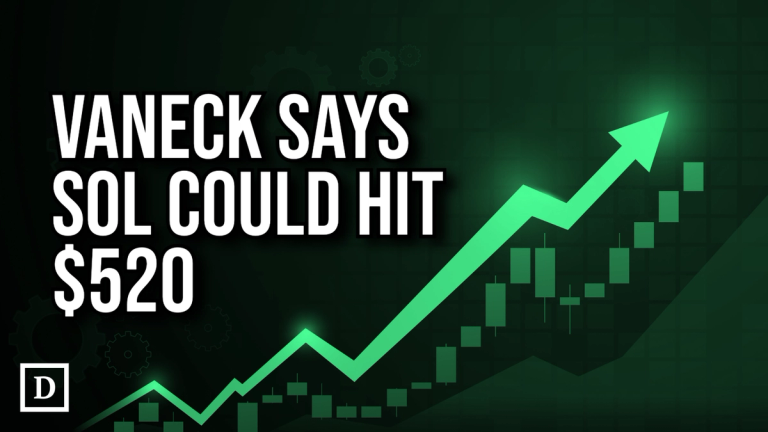
XRP has shown signs of price recovery in recent developments. Market experts emphasize critical price levels for XRP’s upward trend. Continue Reading: Ripple’s XRP Sees Recovery as Market Eyes Potential U.S. Reserve Inclusion The post Ripple’s XRP Sees Recovery as Market Eyes Potential U.S. Reserve Inclusion appeared first on COINTURK NEWS .
CoinTurk News
You can visit the page to read the article.
Source: CoinTurk News
Disclaimer: The opinion expressed here is not investment advice – it is provided for informational purposes only. It does not necessarily reflect the opinion of BitMaden. Every investment and all trading involves risk, so you should always perform your own research prior to making decisions. We do not recommend investing money you cannot afford to lose.
Ethereum Derivatives Outflows Signal Reduced Selling Pressure, Bullish Potential Ahead

Recently, another large-scale outflow from Ethereum (ETH) derivatives exchanges took place, and it has been interpreted as a significant shift in the market. This outflow was heavily publicized on Twitter and was one of only a few times that a net outflow of that size had been recorded on derivatives exchanges. While the implications of this uptick in outflows have not entirely been unpacked, it’s possible that the recent strong price movement in ETH could have something to do with it. In the past, large outflows from derivatives exchanges have been associated with positive price developments on the horizon. $ETH’s derivatives exchange netflow just saw another massive -60K ETH outflow, the second since Feb 3. Big moves like this typically mean less selling pressure and major position closures—often a bullish signal. Are traders gearing up to hold or stake? pic.twitter.com/wqw3wvxF6R — Kyledoops (@kyledoops) February 6, 2025 Massive Ethereum Outflows and Their Implications for Market Sentiment From derivatives exchanges, the latest outflow of 60,000 ETH occurs just days after a similar move in the opposite direction. Yet in this case, no traders appear to be exiting leveraged positions; instead, this latest outflow looks like a coordinated push of ETH to long-term storage. Unavailable assets mean reduced supply, and observers often interpret reduced supply (and the appearance of it, too) as a sign of an impending increase in price. Markets for derivatives often host highly leveraged traders who take large positions in ETH, anticipating that they can profit from price fluctuations. Yet when big outflows happen, they often signal a substantial reduction in these leveraged positions. That’s one way to interpret it. And the interpretation suggests that speculative traders may be battening down the hatches or moving toward a more conservative trading stance. When these exit-the-building traders close their positions, it also removes from circulation the ETH they were holding. And that’s another reason why we shouldn’t be too bummed out about large outflows. Analysts say that these outflows could mean that Ethereum is entering a low-volatility, balanced-market phase. Closing leveraged positions immediately affect the price, but when they no longer have to happen, that’s when we see “organic” price movement—movement not driven by shorts getting squeezed or by overleveraged, long-funded positions collapsing in a heap. And recently, there have been good reasons to think that price stability, and possibly even a move to the upside, is in Ethereum’s near future. UPDATE: Ethereum outflows from crypto derivatives exchanges hit the highest level since August 2023, showing bullish signs as it may lead to reduced selling pressure and closed leverage positions, according to analysts. pic.twitter.com/GbXKMao62y — Cointelegraph (@Cointelegraph) February 7, 2025 Ethereum’s Spot ETF Inflows Point to Institutional Confidence Further contributing to the positivity surrounding Ethereum, the inflow of assets into Ethereum spot exchange-traded funds (ETFs) reached $10.65 million on February 6, which was now the sixth consecutive day of inflows into these investment vehicles. “Spot” ETFs offer both institutional and retail investors a way to gain exposure to Ethereum without having to directly hold the underlying asset. And for Ethereum, spot ETFs have become a significant vehicle for not just sentiment but capital inflows as well. The consistent investments coming into Ethereum’s spot ETFs are yet another marker of the burgeoning confidence institutional players have in the smart contract platform’s future. For these largely-male institutions, steadily accumulating Ethereum through ETFs is a sort of prelude to what they really want to do with Ethereum. They want to build on it, and they believe it can be something much bigger than it is now. The smart contract platform’s low and relatively stable prices in recent months seem like an ideal entry point. Ethereum’s Market Dynamics: What’s Next? Combining large outflows from Ethereum derivatives exchanges with steady inflows into Ethereum spot ETFs might start to alter market dynamics. With the derivatives market shedding leverage, the chances of speculative trading causing wild price swings seem to be diminishing. At the same time, the steady inflow into spot ETFs suggests that institutional players still view Ethereum as a likely winner, which might contribute to staving off the sort of volatility that could result from large Ethereum price moves in either direction. At the same time, the ongoing withdrawal of funds from Ethereum derivatives exchanges seems to be signaling that the speculative bubble in Ethereum is beginning to deflate, with traders adopting a more reserved posture. If this is, indeed, a transition to a new, more sustainable market for Ethereum, it might lead not just to reduced volatility for Ethereum but also (and this is very much a hope for Ethereum’s supporters) to a price that is more reliably upward-trending. In the coming weeks, how these trends continue to evolve will probably decide Ethereum’s price movement. If outflows from the derivatives market keep up their current high rate and institutional inflows into spot ETFs keep coming in, then Ethereum could be set up for a nice growth run. The speculative selling pressure that these traders impose on the market could be going away for the duration of this trend. And the very fact that institutions are willing to invest in Ethereum through spot ETFs could provide a nice foundation of stable price support coming from their inflows as well. On February 6, the total net outflow of Bitcoin spot ETF was $140 million, and the outflow of Fidelity FBTC was $103 million. The total net inflow of Ethereum spot ETF was $10.6519 million, and the net inflow continued for 6 days. https://t.co/59u0BnEqLG — Wu Blockchain (@WuBlockchain) February 7, 2025 Conclusion: A Positive Outlook for Ethereum The recent outflow of Ethereum from derivatives exchanges hasn’t just stopped; it’s actually gained speed in recent weeks. Meanwhile, rather than seeing spot ETFs in Ethereum merely being “approved,” the crypto space has increasingly watched as not just one or even two but several spot ETF ‘futures’ have been launched, and not just launched but with apparent success. So this is the situation: We’ve got a digital asset that could be just about to stop being a joke and instead be a jillion-dollar player, gaining foundation-level support from some of the largest institutions in the world. Considering these optimistic signals, it is reasonable to conclude that Ethereum has a solid opportunity to extend its growth trajectory in the near future. If the nearly quarter-century trend continues of reduced selling pressure and during increased institutional interest, then Ethereum is potentially set up for a strong showing as it goes into the next phase of its market cycle. Disclosure: This is not trading or investment advice. Always do your research before buying any cryptocurrency or investing in any services. Follow us on Twitter @nulltxnews to stay updated with the latest Crypto, NFT, AI, Cybersecurity, Distributed Computing, and Metaverse news ! Image Source: nexusplexus/ 123RF // Image Effects by Colorcinch CoinTurk News

46 Publicly Traded Blockchain Companies in the Market: A Glimpse into the Growing Crypto Sector
The past decade has seen the explosive growth of the blockchain and cryptocurrency industries, with not a few companies choosing to enter the public markets to take advantage of the nearly insatiable appetite for all things decentralized. Per our last look at the space, there are now 46 public trading companies worth mentioning in the CoinGecko universe, which—if nothing else—gives you a sense of some of the potential inside the burgeoning blockchain ecosystem. Below, we profile these companies, hitting the main highlights—what they do, how they do it, and how much they’re worth—across three different trading exchanges. The Landscape of Publicly Traded Blockchain Companies CoinGecko’s research indicates that among the 46 blockchain companies that are publicly traded, 24 are listed on NASDAQ, the global stock exchange most famous for its technology-oriented listings. The biggest of these blockchain-related companies, by market capitalization, is Coinbase, the cryptocurrency exchange platform that everyone seems to know. With a truly breathtaking market cap of $74 billion, it sits atop not only NASDAQ but also the entire blockchain sector. Coinbase has such a near monopoly in the space where it operates that it is mandatory to mention it when discussing investments in the blockchain sector. Immediately following Coinbase is Marathon Digital Holdings, a principal Bitcoin mining company. Its market cap sits at around $7 billion, which is much lower than that of Coinbase, but Marathon is still a commanding presence within the mining sector. The company has profited from the rising demand for not just Bitcoin but also other cryptocurrencies. It has been consistently enlarging its scope and pushing the boundaries of what mining entails, and it has doing so with a clear and steadfast idea of Bitcoin and other cryptocurrencies as a future currency. Coinbase and Marathon rank first and second, respectively, in market cap among blockchain companies on NASDAQ. However, many of the other publicly traded, blockchain-related companies are smaller or operate in niche segments of the blockchain ecosystem. The overall increase in public blockchain-based companies reflects rising levels of interest from both retail and institutional investors in blockchain assets, applications, and services. Blockchain’s OTC and Canadian Market Presence Besides the firms listed on NASDAQ, there are also a number of blockchain firms that can be traded in decentralized over-the-counter (OTC) markets, with 18 companies currently available. These OTC companies tend to be much more speculative and much smaller than the firms you’ll find on NASDAQ, with the investment opportunities they present often hinging on the promise of blockchain-based applications that serve as the foundation for—insert here—everything from the metaverse to decentralized finance (DeFi). One of the tiniest blockchain companies that is publically traded is Blockchain Industries. It has some focus on the metaverse but is not extensively involved in that area. An OTC market security, Blockchain Industries is not going to be encountered by most investors. Yet, among a handful of blockchain companies with an earnings report, this one offers a glimpse of the diverse range of applications and business models that are emerging in the blockchain ecosystem. The global spread of blockchain companies continues to grow, with Canada emerging as a crucial hub. CoinGecko’s research shows 47 other blockchain firms are found on Canadian exchanges like the TSX, CSE, and Cboe. But, for the most part, these firms don’t make very many waves because they’re micro-cap firms, have market caps under $10 million, or are ETFs that track the performance of blockchain assets and their returns. However, there is one firm, in particular, whose reach, notoriety, and returns are much closer to the levels of firms on NASDAQ than the levels of the average Canadian blockchain firm. That firm is Galaxy Digital, and its presence on the TSX is something that Canada can flaunt. The Role of Blockchain ETFs and Small Cap Firms Yet another impressive trend in the public blockchain market is the increasing number of exchange-traded funds (ETFs) that focus specifically on blockchain. These investment tools give investors the chance to buy something akin to a public mutual fund consisting of mostly private firms. The ETFs typically hold shares of a small number of firms that are involved with the development of blockchain technology and tend to be heavy in companies that also have some connection to cryptocurrencies. The blockchain ETF trend shows burgeoning investor interest in this part of the landscape, even as crypto prices and regulations take their turns in the spotlight. By putting their money in ETFs, investors achieve something that more closely resembles a market portfolio for the still-nascent blockchain and crypto sectors—lower risk, if not a lower reward, than buying individual stocks. The future is unclear for smaller, micro-cap blockchain businesses. Some firms might experience considerable growth as blockchain technology moves toward mainstream adoption and the marketplace’s life cycle progresses. Many, however, will have a tough time maintaining their public profiles or attaining profitability. The situation is even more precarious, given that both institutional and retail investors have staked significant amounts of money in the blockchain space. With such pronounced volatility, the question becomes: how do these investors evaluate which blockchain firms to back? How many publicly traded blockchain companies are there? In our latest study, we found 46 noteworthy publicly traded blockchain companies, 24 of which are listed on NASDAQ. Read the full study: https://t.co/Fv1BNj8Sgn pic.twitter.com/pyD03eCgyR — CoinGecko (@coingecko) February 6, 2025 The Future of Public Blockchain Companies While blockchain technology continues to advance, it is anticipated that an increasing number of firms will seek to access capital through public market vehicles. Those may include direct listings, reverse mergers, or, for many still a potentially viable alternative, initial public offerings (IPOs). Beyond promise, interest in the leading edge of technology—decentralized finance, NFTs, and blockchain-based gaming, for example—coupled with asset managers’ and banks’ newfound enthusiasm for digital assets, suggests that a future in which the technology’s most frequently-cited “disruption” (of the public company space, in this instance) becomes reality may not be all that distant. For investors who want to take advantage of this new growth industry, it is essential to proceed with caution in the blockchain market. The growth potential is vast, but this remains a largely speculative sector. Volatility and regulatory uncertainty pose serious risks to capital invested in the blockchain space. The expansion of the blockchain space means that the number of publicly traded blockchain companies will probably keep rising. This signals the broader acceptance of blockchain technology and its increasing influence on the global economy. The question now is how investors will get up to speed with this exciting yet unpredictable landscape. Disclosure: This is not trading or investment advice. Always do your research before buying any cryptocurrency or investing in any services. Follow us on Twitter @nulltxnews to stay updated with the latest Crypto, NFT, AI, Cybersecurity, Distributed Computing, and Metaverse news ! Image Source: Feylite/ Shutterstock.com CoinTurk News











